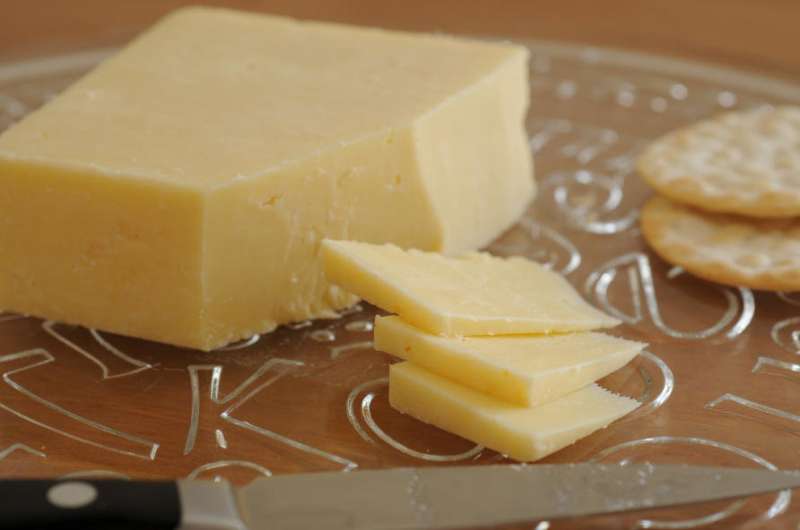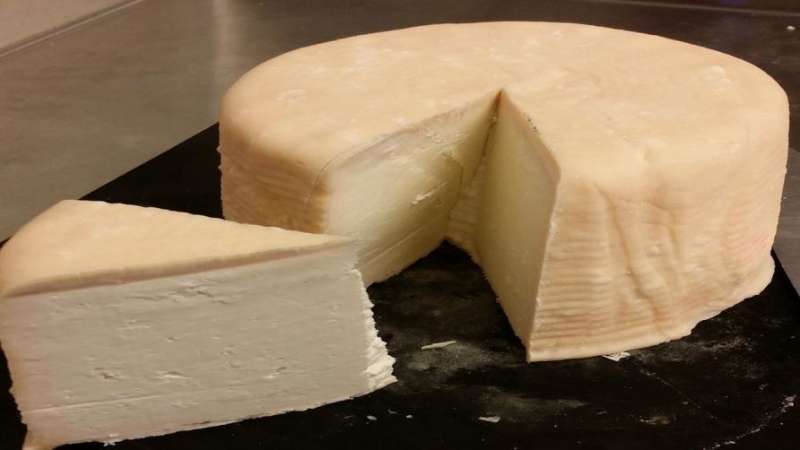Double emulsions in skim milk using minimal food-grade emulsifiers for low-fat cheese

For many of us, a cheese platter after a nice meal is a guilty pleasure.
But new research into fat displacement technology, known as double emulsions, could reduce the amount of fat in cheese, while tricking our tongues into thinking we are still eating something with a full fat, creamy flavour.
Cheese is a high-fat and high-calorie food. Depending on the variety, you're consuming up to 33 per cent fat when you eat it, mostly of the saturated kind. Just one piece of cheddar cheese can contain about 6 to 9 grams of fat.
But when we opt for the healthy choice, most of us find reduced fat cheese loses its creaminess since a lot of the flavour and texture results from its fat structure.
The ARC Dairy Innovation Hub's Functionalised Milk Streams team located at the University of Melbourne is developing new ways to create healthier and tastier dairy products.
"The use of double emulsions means the taste stays the same, but the total calorific content is reduced by replacing fat with internalised water droplets," says Dr Thomas Leong, an early career post-doctoral research fellow from the University of Melbourne.
"By doing this, we can trick our tongues into thinking that we are consuming something that feels a lot higher in fat than it actually is."
Replacing the fat content with water can reduce calorie content by 30 per cent.
Using sound waves to reduce fat content
The team is using a bottom-up approach to completely redesign the fat component of dairy products, starting with one of Australia's favourite cheeses: cheddar

"We use the natural fat-emulsifying proteins in milk, to redesign the types of fats we can incorporate into milk products such as cheeses, yogurts and smoothies. For example, the highly saturated fat present in cow's milk can be replaced with healthier vegetable origin oils such as olive and sunflower oils.
"These fats contain a higher amount of omega-3 fatty acids and have additional benefits in that they do not spike cholesterol levels like animal fats can."
To make these emulsions, the team uses sonic waves and high pressure to generate intense mixing forces on a micro-scale to disperse and stabilise droplets of oil in milk. The mixing forces are generated by a process known as cavitation, which is the formation and collapse of miniature bubbles.
"A balloon that pops gives off a large amount of energy," says the University of Melbourne's Professor Muthupandian Ashokkumar, one of the project's chief investigators.
"Cavitation is essentially the same process, but it occurs within very small, but extremely intense 'hot-spots'. The ability for sound waves or high pressure to create thousands of these bubble hot-spots is the key to efficiently creating stable fat droplets in dairy products."
Stable fat droplets are important because they do not collect to form one big mass of fat - a process known as phase separation, which negatively impacts appearance and taste.
"This technology will provide Australian dairy companies with new capability to tailor their products," says Dr Leong.
"It could provide significant value-add for Australian dairy companies. The challenge we are addressing is to understand how to formulate double emulsions that are stable and can be produced in a cost-effective manner."
The ARC Dairy Innovation Hub is collaborating with industry partners and the University of Queensland, and the research is now moving fast. The next stage is to work closely with industry to design products that people will want to eat.
Dr Gregory Martin, who's leading the project, says the team is beginning to assess the functional characteristics of different types of cheeses made using double emulsions.
"The cheeses made in the lab look, feel and smell great. However, the proof is in the tasting, and the next task will be to make the double emulsion cheeses in a commercial facility so we can confirm that it tastes as good as it looks."
More information: Thomas S.H. Leong et al. The formation of double emulsions in skim milk using minimal food-grade emulsifiers – A comparison between ultrasonic and high pressure homogenisation efficiencies, Journal of Food Engineering (2017). DOI: 10.1016/j.jfoodeng.2017.09.018
Provided by University of Melbourne




















